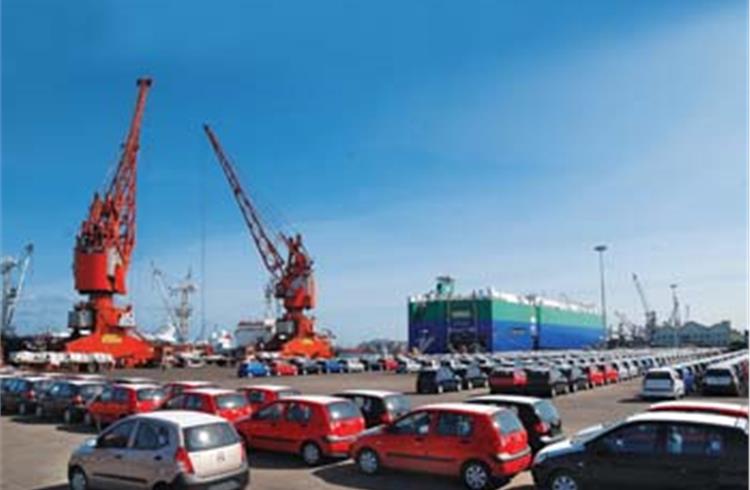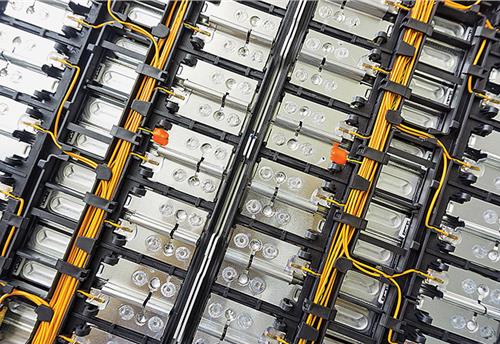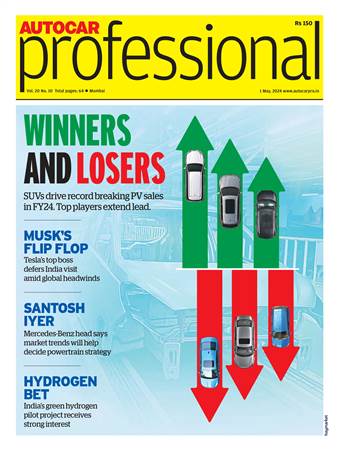Exports under pressure
India’s passenger car exports have been growing steadily over the past few years with major players like Hyundai and Maruti leading the charge. The government itself is keen to transform India into a global small car production hub and has evolved policies that would help carmakers achieve this goal. However, the global economic crisis and the subsequent drop in demand for cars in global markets from late last year has meant that times are about to get much tougher for car exporters.
As per the latest data released by the Society of Indian Automobile Manufacturers (SIAM), Hyundai Motor India Ltd (HMIL) managed to retain its crown as the top exporter of passenger vehicles from India. The Korean carmaker exported close to 199,000 units during April to December 2008, compared to 99,000 during the same period in the previous year. Leading the charge was its extremely successful, i10 hatchback model, which replaced the Santro in global markets and is exported to Asia, Latin America and Western Europe. Late last year HMIL also began exporting its stylish new i20 to global markets, where it replaces the Getz. These models pushed December 2008 exports close to 23,000 cars, compared to 11,600 cars during the previous year. For calendar year 2008, the company reported total sales of a little over 489,000 units, of which exports comprised 244,000 units, compared to 127,000 units in 2007. As a result Hyundai dominated car exports from India, the Korean carmaker alone accounting for a massive 78 percent of passenger car exports from India in 2008.
The big jump in exports for Hyundai came about when the company decided a few years ago to make India the global production base for its smaller cars. According to HMIL’s managing director H S Lheem, “This decision has huge significance for our Indian operations. The rationale behind doing this is that India is a big market for compact cars and making it a global production base enables us to produce large volumes, which in turn generate economies of scale in terms of production and allow us to price the cars competitively.”
However, Lheem acknowledges that sustaining the growth in exports during 2009 will be extremely challenging, given the decline in demand for cars in key export markets like Europe. “With the global meltdown, both the domestic market as well as our exports have come under tremendous pressure. Currently we are exporting about 50 percent of our total production, which is around 260,000 units, to around 95 countries across the globe. But we fear that if the current downturn continues, our exports might come under considerable pressure and may even fall by as much as 25 percent in 2009. So things don’t look too bright at this point.” According to him the demand for cars from overseas markets would remain tepid for the first six months of 2009 and might then start recovering gradually as interest rates start declining as a result of recent initiatives by the government. In response to these developments, the company has recently cut back production from three shifts to two shifts at its manufacturing plants near Chennai, in order to prevent building up excess inventory. The severity of the challenge can be gauged from the fact that Hyundai has got orders for only 9,000, 11,000 and 3,000 units for January, February and March 2009 respectively, against the targeted 20,000 to 25,000 units per month.
The company recently said that it expects to sell around 120,000 units of its new i20 model in global markets during 2009, which is around 90 percent of the total production of that model, the balance being allocated for the Indian market.
Traditionally, exports have provided carmakers like Hyundai with a cushion against declines in their domestic markets and also given them the chance to earn a higher margin on their cars. However, in the current scenario where the entire world is experiencing a slowdown, pushing exports to sustain growth rates becomes ever more difficult. However, despite the current difficulties, Hyundai is convinced about the long term potential for India to emerge as an export hub for cars, particularly smaller cars. “India is a very large market for compact cars and within the Hyundai family India has been designated as a production hub for all our compact cars like the Santro, i10 and i20.” Lheem clarifies. He adds, “Moreover India has a large base of skilled labour and technical expertise with a relatively low cost of manufacturing. Over time as the market increases here in India, we will also expand our operations and add to both our volumes and product range.”
Discussing some of the problems faced by Hyundai in growing its exports, Lheem says, “The major obstacles are poor infrastructure in terms of roads and ports. For example, it takes us hours to reach our cars from the factory to the port, as trucks can go only within certain time limits, which creates a bottleneck. Similarly, there are many other infrastructural problems and if this improves, then not only will our exports grow, but the growth of the entire industry will be much faster.”
Hyundai is particularly proud about the fact that its Indian-made cars meet exacting European standards. “We believe that today made-in-India cars command as much respect as cars made anywhere else in the world. Today, if you drive on the German autobahn or any other road in Europe, you will come across Hyundai cars which are made in India. As the managing director of Hyundai India, it makes me very proud to see these cars on European roads. I feel every Indian will feel proud to see made-in-India cars competing with the very best across the globe,” says Lheem.
Hyundai says the i10 has done particularly well in export markets with sales of over 100,000 units in just 10 months. Broadly speaking, the European market is increasingly turning to smaller cars like the i10 since customers want to lower their carbon footprint by using more fuel efficient cars that have lower emissions. The company feels that when the overall market demand in Europe starts to improve, the i10 has particularly good prospects given this broad trend.
Finally, Lheem urges the Indian government to provide greater support to Hyundai in its efforts at making India a global small car production hub. Lheem says, “The government can do many things to help. One would be to improve the infrastructure as I mentioned earlier, secondly the government can introduce a system of incentives for large scale exporters like Hyundai that are performing well. As of now we have no incentives which would help us in providing better prices, or a cushion for the losses that happen even as a result of currency fluctuations. So if the government extends some help it will make exports even more competitive.”
Maruti commences A-star exports
Maruti Suzuki is the second largest exporter of cars from India after Hyundai. The company has recently renewed its thrust on overseas markets with the start of exports of its newest model the A-star to Europe, where it is badged as Alto. Despite the slowdown in demand for cars globally, the Japanese company is hoping that European car buyers would go for its smaller and more fuel efficient models. It is also confident that its new car terminal at Mundra Port in Gujarat will help it to export cars more efficiently from India.
“Maruti Suzuki plans to scale up its export to 200,000 units by 2010-11. The A-star alone will account for 100,000 units. To handle such a large volume of exports, it is obvious that we need a good port infrastructure. With a dedicated car terminal coming up at Mundra Port, Maruti Suzuki will be able to handle such large volumes in future. The new port will also enable us to bring in efficiency in the operations in terms of costs and turn around time for vessels,” says Rajesh Singh, general manager, international marketing, Maruti Suzuki India.
“In the current difficult times and in the wake of rising fuel costs, small cars are being preferred across the globe for benefits like fuel efficiency, price and environment friendliness The A-star is going to be a star export model,” he adds.
Meanwhile, former managing director and current chairman R C Bhargava says that the A-star would enable the company to achieve its export target of around 200,000 cars by 2010-2011. The company exported 53,000 units last year and is expected to export more than 50,000 units this year too. “We expect exports to touch 200,000 cars by 2010-2011 provided the world economic situation changes for the better. Demand worldwide is shifting to smaller fuel-efficient cars and we should benefit by it,” Bhargava notes. However, if the global economic downturn continues for a longer period, he says exports would not fall below 150,000 units by 2010-2011. While there are no concrete orders from Nissan for the A star, the company hopes that they would materialise, "but the numbers will depend on how Nissan sees sales at its end." Bhargava says by June this year the market situation will be clearer and mentions that Nissan had earlier committed to buy around 50,000 cars to be sold under the Nissan Pixo badge in Europe.
In the current fiscal, Maruti Suzuki has exported close to 44,870 units, growing 18 percent over the previous fiscal. The carmaker is now banking on the Mundra Port for its exports, while continuing to route a portion of its exports through Maharashtra’s Mumbai and Nhava Sheva ports. On January 12 the first export shipment of A-stars set out for Europe. The pilot consignment, comprising 1,534 cars with 1,458 cars for the UK and the balance for the Italian market. It is expected to reach European ports by early February 2009. The Suzuki A-star export consignment was transported to Mundra Port from the company's Manesar plant on a specially designed double-decker auto wagon railway rake.
Speaking on the occasion, Shinzo Nakanishi, managing director and CEO, Maruti Suzuki India, said: “We are delighted to partner Mundra Port and Special Economic Zone Ltd and NYK line for this important initiative. Maruti Suzuki has ambitious plans for exports. It has the technology, skills and manufacturing capabilities to build global quality cars for international markets. However, to match our export ambitions, we needed infrastructure support like a dedicated car terminal. With this initiative and with partners like MPSEZL and NYK, we have confidence that our exports volumes would grow manifold. It is indeed a big leap in automotive logistics for India.”
Logistically, Mundra Port is over 180km closer to Delhi than Mumbai Port and JNPT and is connected to National Highway 8. It is also linked to the national railway grid through a self-developed 57km long railway link capable of handling 24 rakes per day.
The new terminal has a car stockyard spread over 35 acres, and a dedicated ‘buffer area’ for cars to be parked before loading on ships. The PDI Centre, spread over 7,500 square metres, conducts the final quality check before export. Ford India is another car exporter. It began its first export of fully built passenger cars from India with its Fiesta model being sent to South Africa back in September 2007. When the company launched the updated Fiesta last summer, exports were held back. At the moment Ford does supply the Fiesta to global markets but only against conformed orders. In fact the company managed to ship a few cars in January 2009 and it also continues to export kits for the Ikon saloon to South Africa as well.
These are clearly challenging times for car exporters from India, given the rapid contraction in demand for cars globally. Inspite of these difficulties, leading players like Hyundai Motor India and Maruti Suzuki have made exports a key element of their overall growth strategy. Hence they are unlikely to be deterred by the current global downturn. The government on its part needs to look carefully at how it can help these companies overcome the current circumstances so that when global demand revives, India can achieve its goal of becoming a small car hub.
RELATED ARTICLES
Strong support for EV ambitions
New policies and initiatives reflect the government's comprehensive approach to driving industrial growth, fostering inn...
Branded content: HL Klemove inaugurates first Local ADAS Radar Manufacturing Unit in India, marks a significant achievement in “Make in India” initiative
The inauguration ceremony was held in the presence of Vinod Sahay, President and CPO of Mahindra & Mahindra Ltd. and Dr....
BluWheelz to 'Green Up' logistics sector
With their EVs-as-a-service solution, the startup is playing it smart with costs and looking to electrify the entire seg...





 By Autocar Pro News Desk
By Autocar Pro News Desk
 02 Feb 2009
02 Feb 2009
 2825 Views
2825 Views









